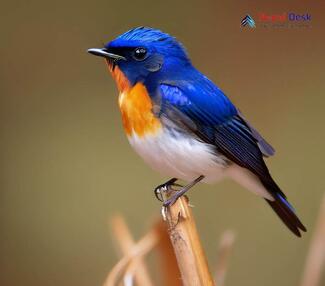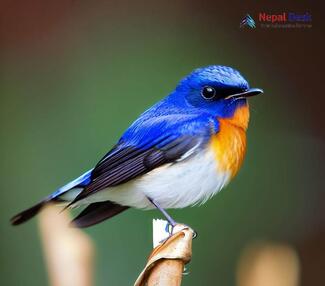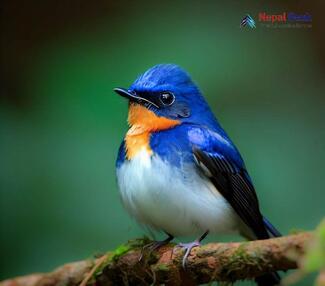The Sapphire Flycatcher (Ficedula sapphira), a stunning example of avian beauty, is a fascinating bird species that deserves our admiration. This elusive creature, with its striking plumage, is native to the lush Himalayan forests, including Nepal. In this article, we'll explore the taxonomy, physical features, habitat, and diet of the Sapphire Flycatcher and its significance for birdwatchers and nature enthusiasts visiting Nepal.
A Closer Look at the Bird's Taxonomy
The Sapphire Flycatcher belongs to the family Muscicapidae, which includes a diverse array of small passerine birds commonly known as Old World flycatchers. Classified under the genus Ficedula, the species boasts a unique position within its family and stands out for its mesmerizing colors.
Physical Features: A Stunning Sapphire Spectacle
As its name implies, the Sapphire Flycatcher's most striking feature is its breathtaking deep blue plumage. Males exhibit vibrant shades of sapphire blue on their upperparts while females have a more subdued version with slightly duller coloring. Both sexes exhibit whitish underparts blending seamlessly with their dazzling blue bodies. With an average body length of 5 inches (13 cm) and an agile build, these small birds are perfectly suited for their aerial acrobatics while hunting insects.
Habitat: Lush Forests and High Altitudinal Ranges
The Sapphire Flycatcher is at home in dense evergreen broadleaf forests and coniferous mixed forests in high-altitude regions. Their preferred elevational range typically lies between 6,600 and 11,800 feet (2,000 and 3,600 meters). In Nepal specifically, these birds can be found thriving within various protected reserves such as the Langtang National Park and Makalu-Barun National Park, making Nepal a splendid destination for birdwatchers eager to catch a glimpse of this enchanting species.
Diet: Aerial Insect Hunting Extraordinaire
Insects make up the bulk of the Sapphire Flycatcher's diet. They are adept aerial hunters that skillfully catch their prey mid-flight. Flies, moths, butterflies, and beetles are just a few of their favorite menu items. The Sapphire Flycatcher's extraordinary agility and impeccable timing allow it to snatch insects with ease during swift, swooping flights.
The Sapphire Flycatcher in Nepal: A Birder's Delight
Nepal is known for its rich biodiversity and is home to many unique bird species, with the Sapphire Flycatcher being one of its most magnificent treasures. Watching these brilliant birds in their natural habitat will undoubtedly be an unforgettable experience for avid birders and nature lovers alike. Their presence in the region's national parks and protected reserves showcase the country's commitment to preserving its rich ecological heritage.
In conclusion, the Sapphire Flycatcher (Ficedula sapphira) is not only a visual feast for the eyes but also an example of nature's remarkable adaptability. From its vibrant plumage and skillful hunting techniques to its preferred habitat within Nepal's lush forests, this incredible bird never ceases to amaze and is certainly a captivating subject for bird enthusiasts worldwide.




